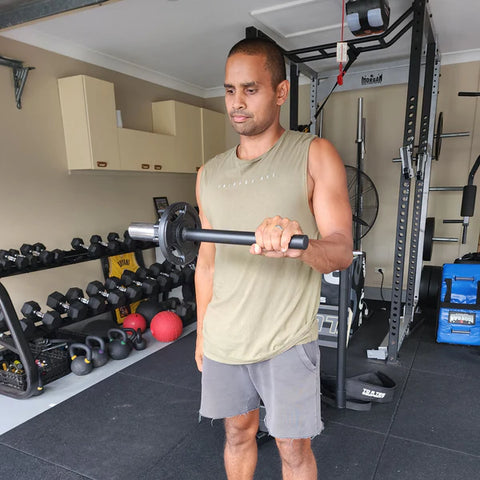
Innovative Uses for the Wrist Bar: Enhance Your Wrist Strength and Flexibility
Explore six innovative exercises using the Wrist Bar to enhance your wrist strength, flexibility,...
In today's world, where many of us spend hours glued to our desks, the negative effects of prolonged sitting are becoming more evident. From back pain to tight hips, the sedentary lifestyle that accompanies desk work can take a toll on your body. But the good news is that with a few simple exercises, you can counteract these effects and maintain a healthier, more active lifestyle.
Here are seven essential workouts for desk workers that can help you stay fit, alleviate discomfort, and boost your overall well-being.
Why it’s important: Sitting for long periods can cause stiffness in your spine and reduce mobility. This twist helps to relieve tension and improve spinal flexibility.
How to do it:
Why it’s important: Strengthen your upper body and engage your core without leaving your desk. Desk push-ups are a great way to improve posture and prevent upper back and shoulder pain.
How to do it:
Why it’s important: Target your triceps and shoulders with chair dips, which can help counteract the muscle imbalances caused by desk work.
How to do it:
Why it’s important: Tight hip flexors are a common issue for desk workers, leading to discomfort and poor posture. Stretching them out can provide relief and improve flexibility.
How to do it:
Why it’s important: Strengthen your lower abs and improve circulation in your legs with seated leg raises. This exercise is simple yet effective for maintaining lower body strength.
How to do it:
Why it’s important: Desk work often leads to neck stiffness and tension. Regularly stretching your neck can reduce this discomfort and prevent headaches.
How to do it:
Why it’s important: Improve circulation and strengthen your calves with this easy exercise, which can be done while standing at your desk or during a quick break.
How to do it:
These exercises are designed to be quick and easy, making them perfect for integrating into your daily routine. Consider setting a timer to remind yourself to stand up and move every hour. Additionally, try to take short walks during your breaks or opt for a standing desk if possible.
By consistently incorporating these workouts into your day, you’ll find that your energy levels improve, your discomfort decreases, and your overall well-being gets a significant boost. Remember, the key is consistency—small efforts throughout the day can lead to big results over time.
Final Thoughts
Staying active while working a desk job can be challenging, but it's not impossible. The exercises listed above are a great starting point for anyone looking to counteract the negative effects of prolonged sitting. Prioritise your health by making movement a regular part of your workday, and your body will thank you!